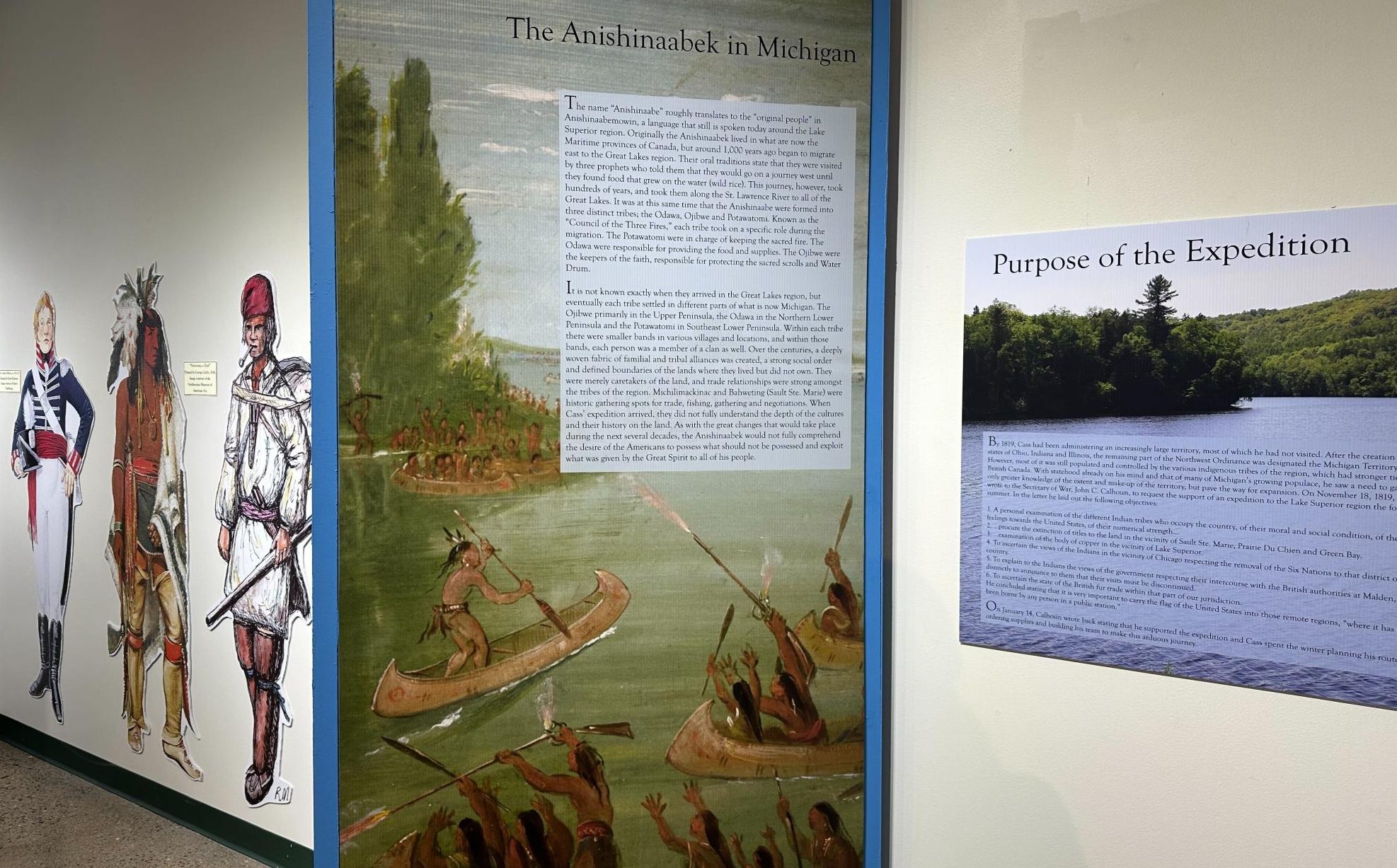The Beaumier U.P. Heritage Center and Center for Upper Peninsula Studies is presenting the 23rd Annual Sonderegger Symposium in the Northern Center Friday, Nov. 10 beginning at 8 a.m.
The theme of this years Sonderegger Symposium relates to the Lewis Cass expedition currently on display at the Heritage Center, titled “Perspectives on 1820 and Beyond.”
The Symposium will go a step further than the exhibition and discuss the various aspects of the culture of the Indigenous Peoples of the region, says Dan Truckey, Director and Curator of the Beaumier U.P. Heritage Center, who came up with the Symposium theme while planning the exhibit.
“There were a lot of stories we couldn’t tell in the exhibit, and we just couldn’t go into that kind of depth,” Truckey said. “I thought the symposium would be an excellent opportunity for us to do that, to go a little bit deeper and talk about those things that need to be flushed out more.”
This topic being the history and point of view of expeditions of the Great Lakes Region from the Indigenous Peoples living on this land.
“The old saying is if we don’t know our history, we’re doomed to repeat it, but I think it’s more than that. I think knowing where we came from is the key to healing the wounds that were created, and those are wounds that we are still working to heal today,” Truckey said. “If we don’t know what happened and why it happened, then we can’t really address those.”
The Symposium will discuss this from various perspectives of historians and professors, including NMU Center for Native American Studies Professor, Martin Reinhardt, who is an Anishinaabe Ojibway citizen of the Sault Ste. Marie Tribe of Chippewa Indians.
“Colonization is the original sin of the U.S. and its predecessor colonizing nations. Expeditions undertaken under the banners of the U.S., Canada, and other foreign colonial nations were not some noble quest. In fact, they were nefarious and conspiratorial,” Reinhardt said.
In order to heal these wounds of colonization, Reinhardt suggests we must all heal together, which requires an accounting of what happened, reparations and assurances.
“If we truly care about healing relations between Indigenous and non-Indigenous Peoples in our world, we have to take time out of our busy lives to have meaningful discussions about what happened and how to best take actions to right the wrongs that have been done,” Reinhardt said. “We cannot bury our heads in the sand and hope the problems go away.”
At 2 p.m., Reinhardt will discuss treaties between the Anishinaabe Three Fires Confederacy of Ojibway, Odawa and Potawatomi, and other nations, Canada and the U.S.
The lecture will provide an overview of studies conducted regarding education and food provisions in treaties made between the U.S. and American Indian Tribes.
In addition to the Sonderegger Symposium, campus events will be held throughout November and through Dec. 2 to celebrate Native American Heritage Month. To view the list of events click here.
“I hope everyone has a productive and meaningful experience at the symposium and other Native American Month activities throughout November,” Reinhardt said.
Truckey hopes attendees are able to learn more about the history of the Great Lakes Region.
“It’ll give [attendees] a greater appreciation of how this area came to be and how our history played out, and maybe break down some of their assumptions about what happened and why it happened and the impact that it’s had in the region,” Truckey said.
To view the schedule of lecturers visit: https://nmu.edu/upperpeninsulastudies/schedule. The lectures will also be live-streamed and recorded, and can be viewed here.








